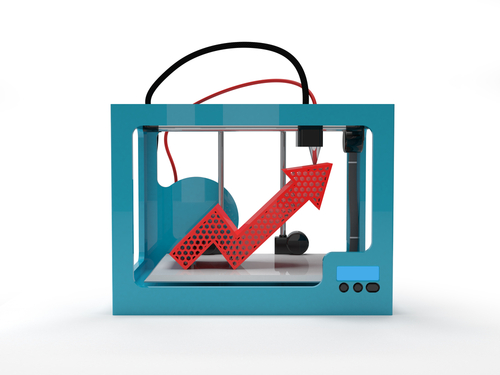I follow the Maker Movement as a consumer, analyst and also as a maker. What is the maker movement? It a manifestation of the DIY (Do It Yourself) or DIWO (Do It With Others) culture where everyday people design, build and/or market something that they want or need on their own rather than buying something off the shelf. The maker movement has led to the creation of a number of technology products and solutions by typical individuals working without supportive infrastructure. This is facilitated by the increasing amount of information available to individuals and the decreasing cost of electronic components.
One of the most interesting sub-movements of the maker movement to emerge recently is the rise of 3D printing. Once the subject of science fiction, ordinary people have the capacity to bring their ideas to life simply by clicking “print.” I’m not talking about paper-printed designs of accessories, furniture, cars, houses or even synthetic body parts, I’m talking about physically producing them wherever, whenever.
The impact of 3d printing is potentially profound. In the manufacturing world, 3d printing is also known as additive manufacturing and it’s already moving product development from the factory into the office. Essentially, consumers are becoming creators. Manufacturers are becoming suppliers. Businesses now face disruption and competition from the very people they used to sell to up and down the supply chain. With the barrier to production hitting new lows, this threat is only materializing…and accelerating.
Chris Williams, assistant professor and director of the Design, Research, and Education for Additive Manufacturing Systems (DREAMS) Lab at Virginia Tech compared 3d printing to the likes of application development. In an interview with The Financial Times, Williams shared, “What the app idea has given us is that anyone can be a software developer. Now that’s the same for physical ideas.”
In the same article, FT also interviewed Jordan Brandt, a technology futurist in the Manufacturing 2020 Team at Autodesk, a 3d software company. He believes that with additive manufacturing comes the ability to disrupt manufacturing overall as well as the supply chain, “In [a] super-optimal supply chain, value is added at every stage…”
The word “added” in Brandt’s quote could also be swapped out with “created” for an entirely different effect.
What happens when manufactures become the supply chain?
GE is thinking about just that…
The company is exploring ways to build more than 85,000 fuel nozzles for its newest jet engine according to Bloomberg. Rather than source, it plans to create the units with 3D printers.
Greg Morris, business development leader for additive manufacturing at GE Aviation shared that GE’s supply chain is already being stretched, “There doesn’t exist a supply chain out there right now for this kind of work. GE has to be involved in developing it.”
Even though it’s possible, it’s not that easy to simply shift resources toward manufacturing and supply chain disruption.
Sal Spada, Research Director at ARC Advisory Group, recently told a crowd at ARC’s annual automation forum held in Orlando, Florida, “if you are considering additive manufacturing on the horizon as part of a manufacturing strategy then you better start now.”
As Forbes’ Steve Banker notes in response to Spada’s advice, “The technology limitations and required process knowledge are nontrivial.”
In the grand line up of business services, processes, and philosophies to transform as a result of digital disruption, supply chains are clearly not immune. In the worlds of marketing, sales, and service, digital transformation is changing how business is done, not just through or because of technology, but also due to shifts in customer (and employee) behavior, values and expectations. The same is true with supply chains.
Whether or not businesses pursue supply chain optimization or full-blown transformation is dependent on the business issues that arise because of current and coming shifts in respective markets. As in digital transformation, supply chains will also require changes in strategy, processes, sourcing/procurement, logistics and distribution, et al. Equally the goal and the challenge are to evaluate business issues and opportunities before they become technology issues.
In the end, every aspect of business, even supply chains, are open to disruption. The DIY culture of the maker movement is just the beginning. Disruptive technology and trends does just that…they disrupt. However, processes, systems, technology, resources, partners, etc., benefit from integrated resilience. That has more to do with culture and leadership than it does with technology.
As Spada recommends, we should all prepare for the future yesterday because tomorrow is already here.
Connect with me…
Twitter | LinkedIn | Facebook | Google+ |Youtube | Instagram | Pinterest
3d Printer Credit: Shutterstock







Interesting post, Brian. I wonder if 3D printing will impact areas other than, but related to, the supply chain. Is it sustainable? Will it kill or create jobs? Will the impacts on the supply chains create a waterfall of issues with suppliers?
I suppose I should have asked yesterday.
Interesting questions Gabe. I’m paying attention…
Really interesting, thanks for sharing your insights. Like Gabe I do wonder about the knock on effect that will come along with 3D print
Thank you Kostas. Me too! 🙂